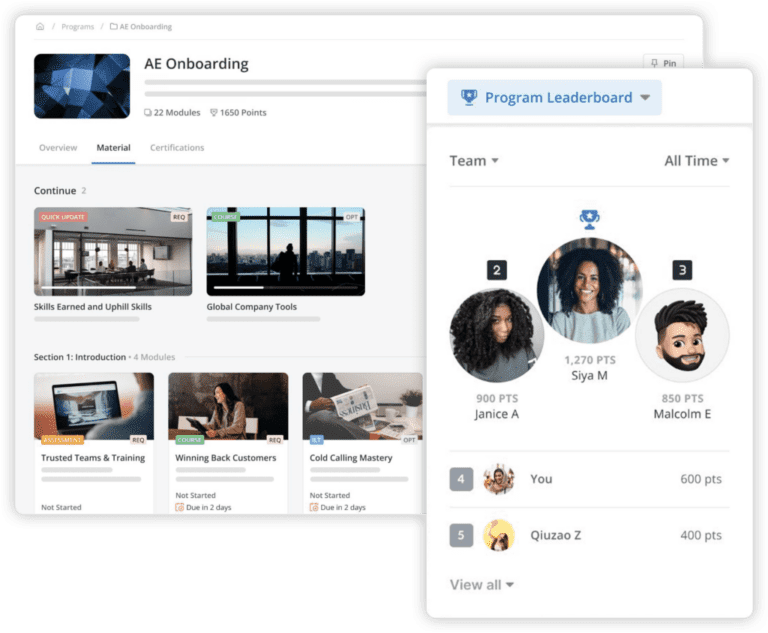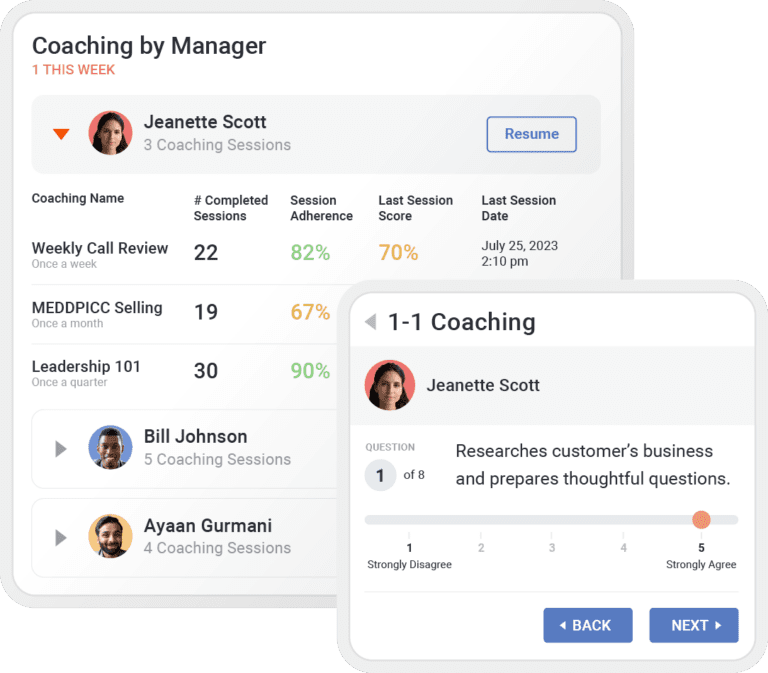Many factors go into sales efficiency, including lead generation, qualification, market dynamics, sales cycle length, personas, and processes—among others.
The right mix can be tough to pinpoint and many orgs spend a lot of time and resources finding the exact recipe for what makes their sellers most efficient.
In this blog post, we’ll walk you through finding the sales efficiency approach that will work best for your selling team.
Key takeaways
- Define the difference between efficiency, effectiveness, and productivity for your organization to build the best roadmap for achieving true sales efficiency.
- Dig into the technologies supporting your team. Automate repetitive tasks and integrate data analytics so sellers can focus on high-value activities.
- Put continuous improvement frameworks in place. Set realistic goals and then measure your team against them regularly.
What is sales efficiency?
Sales efficiency metrics are one way to compare how much money the sales department brings into your business vs. how much it sends out the door. They can also reveal important information about your investments and how your teams utilize available resources.
Sales efficiency helps you visualize three things:
- Revenue
- Costs
- The relationship between these two
To calculate your own ratio, you’ll use the sales efficiency formula. Take all your sales costs — from salaries and benefits to tech investments and sales collateral — and divide them by your revenue. The result helps describe how your spending and income interact.
For example, say you made $10 in Q1 and spent $5. Your sales efficiency ratio is 2 — or, perhaps more accurately, 1:2, which means you make $2 for every $1 you spend. On the other hand, if you made $20 and spent $40, your ratio is 0.5. For every $1 you spend, you only make $0.50.
Here’s a simplified breakdown of what these ratios mean:
- Less than 1: You’re losing money.
- Exactly 1: You’re roughly breaking even.
- More than 1: You’re making money.
Simply put, higher sales efficiency means that more of your revenue becomes profit.
Why is it important to track sales efficiency?
There are plenty of good reasons to keep the sales efficiency formula in your back pocket. Here are just a few examples:
When you track sales efficiency, you can use the ratio to evaluate sales team performance. This helps identify areas where the team is performing well and where improvements may be necessary. It can also point to reasons why your quota attainment might be slipping.
Sales efficiency metrics tell you where you are and where you should be going. You can use this information to set achievable goals for the sales team, helping them improve their overall efficiency and better define success.
A good ratio means you’re using your resources wisely. When you improve sales efficiency, you maximize your return on investment (ROI) by putting those resources in the right place depending on your needs and challenges. For example, if your sales team feels underprepared and resultantly loses sales, you might see improved ROI by investing in training and development programs.
Sales efficiency isn’t just a snapshot of your current sales landscape; it’s a way to help forecast future sales and revenue. By analyzing past data and comparing current metrics, you can make informed decisions and adjust your strategies accordingly.
While sales efficiency is a useful measurement, it’s not the only thing you need to keep track of. Fortunately, sales efficiency metrics help create context for other data, which can create a more complete picture of your profitability, revenue growth, sales team structure and more.
Sales efficiency vs. sales effectiveness vs. sales productivity
You may see sales efficiency, sales effectiveness, and sales productivity used interchangeably — but that’s not really correct. Here’s a better way to think about these three concepts:
| Sales efficiency | Sales effectiveness | Sales productivity |
|---|---|---|
| This focuses on what you're doing | This is more about how your sales team is performing. | In many ways, productivity is the outcome of efficiency plus effectiveness. |
| Example: You spend a certain amount on sales team training. This is part of your sales efficiency ratio. | Example: The amount you spend on training stays the same, but effectiveness measures how much your sales reps are getting out of that training and whether they’re utilizing the new tools and processes. | Example: You use efficiency and effectiveness metrics to identify the ideal amount to spend on training. This is the point at which your sales reps are getting maximum value, but your investment is still reasonable. |
6 ways to improve sales efficiency
Once you know all the differences in sales efficiency vs. sales effectiveness vs. sales productivity, you can put it all together to make significant improvements for your reps and revenue.
First, though, you need to know how to bring that sales efficiency ratio up:
#1. Provide sales training
Training helps sales reps develop the skills and knowledge necessary to be as efficient as possible. This education can cover everything from product knowledge and customer relationship management to sales techniques and sales platform utilization.

#2. Set realistic goals
The keyword here is “realistic.” Make sure your goals are within reach so sales teams feel motivated to make progress.
#3. Automate tasks
When you automate lead generation, data entry and other manual tasks, you can save time for reps and help them focus on higher-value opportunities.
#4. Use sales tools
Solutions such as customer relationship management (CRM) software or sales enablement platforms can help streamline the sales process.
#5. Measure and analyze sales data
Data tells the story of your sales department. Measure this information to identify areas for improvement and extract valuable insights on sales optimization.
#6. Make coaching a habit
Coaching can support every stage of the sales process and is a valuable tool for increasing efficiency. Identify areas where your reps struggle most often and use these as learning opportunities — and don’t forget to fill in the gaps with training and support materials, too.


How Mindtickle helps to improve sales efficiency
To truly cook up the secret sauce to sales efficiency, you need to put all these pieces together. That means keeping your sales efficiency metrics, sales performance data, enablement materials, and tech tools all in one place.
Mindtickle is a platform that does all this and more. By providing a single home for training and content materials, performance tracking, visibility into your forecast, deals, and calls, and more, Mindtickle creates the foundation you need to improve sales efficiency in the right ways. The result is a unified sales ecosystem that provides insight into your strengths and weaknesses — all through data-driven, scalable insights. You can oversee every moving part, from individual sales reps to entire departments.
For example, say you’re focused on Software as a Service (SaaS). SaaS sales efficiency has unique benchmarks depending on what your sales process looks like, who your customers are and how your reps handle processes such as demos and platform onboarding. With Mindtickle, you can personalize your approach by rolling out templated sales plays that include content, training modules, best practice call recordings, and Mutual Action Plans so best work and win deals.
Put Mindtickle to work for your sales efficiency
If it’s time to improve sales efficiency, it’s time to try Mindtickle. With all your data, materials, processes, and training in one place, you’ll have the insight you need to make targeted improvements.
Sales Efficiency with Mindtickle
Talk with an expert about your current approach to making your sellers efficient and how Mindtickle can amplify those efforts.
Request a DemoThis post was originally published in May 2023 and was updated in April 2024.








